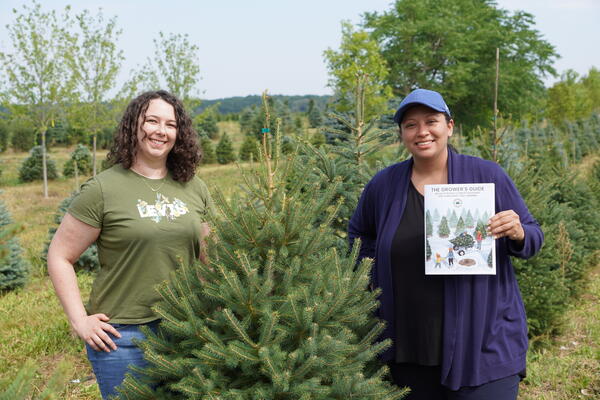
U.S. ski industry suffers $5B hit from climate change
First-of-its-kind study estimates the economic damages climate change has had on the U.S. ski industry over the past two decades

First-of-its-kind study estimates the economic damages climate change has had on the U.S. ski industry over the past two decades
By Media RelationsThe U.S. ski industry has lost more than US$5 billion over the past two decades due to human-caused climate change, according to a new study.
The study from University of Waterloo and University of Innsbruck researchers compared ski seasons in winters from the 1960s to 1970s with the last two decades, from 2000 to 2019. The analysis determined the average ski season has been shortened by five to seven days, and lost skier visits combined with increased snowmaking have cost the U.S. ski industry an average of US$252 million per year.
"We are probably past the era of peak ski seasons," said Dr. Daniel Scott, professor in the Department of Geography and Environmental Management, part of Canada's largest Faculty of Environment. "Average ski seasons in all U.S. regional markets are projected to get shorter in the decades ahead under all emission futures. How much shorter depends on the ability of all countries to deliver on their Paris Climate Agreement emission reduction commitments and whether global warming temperatures are held below two degrees Celsius."
The multi-billion-dollar ski industry has long been identified as one of the most at-risk sectors of the tourism system. The study is a critical first step to understanding the financial impact on the U.S. ski industry and the broader economic damages to American ski tourism and destination communities.
Looking forward, the researchers calculated the economic impact that would occur under a range of different greenhouse gas emission scenarios. By the 2050s, even with advanced snowmaking technology, the research found ski seasons are projected to shorten by 14 to 33 days in a low-emission future where pollution from greenhouse gases is rapidly reduced and by 27 to 62 days in a high-emission future. The economic impact on the ski industry would rise to as much as US$657 million in the low-emission scenario or as much as US$1.4 billion with higher emissions.
These estimates are considered somewhat conservative as they only include lost direct revenue from reduced ski visits and increased operational costs from more snow production. The study does not account for decreases in hotel, retail and other spending from ski-related tourism costs, which can have a much larger impact on the destination economy. It also doesn't factor in the capital costs of expanded snowmaking and impacts on real-estate values at highly impacted ski destinations.
"Climate change is an evolving business reality for the ski industry and the tourism sector. The record-breaking temperatures this winter provided a preview of the future," Dr. Scott said. "It tested the limits of snowmaking in many areas and altered millions of skiers' ski visits and destination choices."
Similar analyses in other regional markets and further research on the sustainability of snowmaking and skier demand are needed to determine how the competitiveness of ski destinations across North America and around the world will evolve as climate change unfolds.
The study, How climate change is damaging the US ski industry, was recently published in the journal Current Issues in Tourism.

Read more
Here are the people and events behind some of this year’s most compelling Waterloo stories

Read more
Waterloo researchers are helping to make a much-loved holiday tradition more sustainable all year round

Read more
Researchers awarded funding to investigate ecology, climate change, repatriation, health and well-being through cultural and historical lens
The University of Waterloo acknowledges that much of our work takes place on the traditional territory of the Neutral, Anishinaabeg, and Haudenosaunee peoples. Our main campus is situated on the Haldimand Tract, the land granted to the Six Nations that includes six miles on each side of the Grand River. Our active work toward reconciliation takes place across our campuses through research, learning, teaching, and community building, and is co-ordinated within the Office of Indigenous Relations.